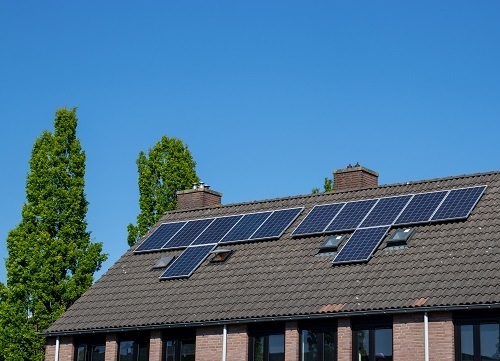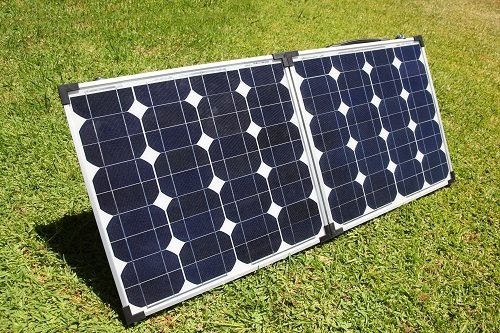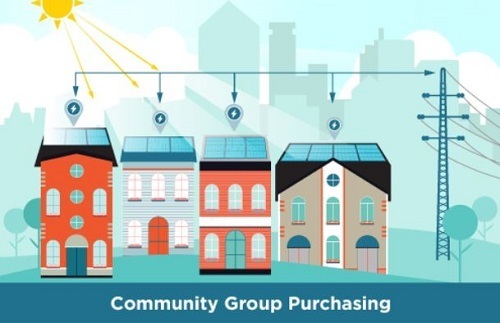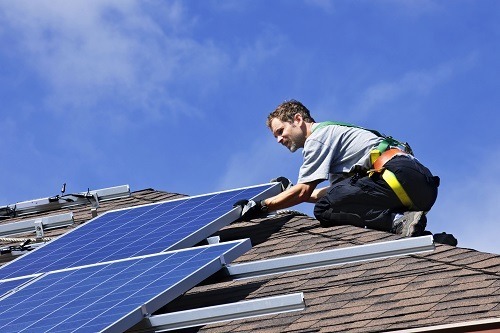Most renters assume they cannot enjoy the many advantages of solar power, since they don’t own their residence and are unaware of solar rental.
That’s because - like any other home improvement - installing solar panels is the exclusive right of the landlord; they'd most likely be unhappy if you, a renter, independently installed solar panels on their property (though they might thank you in the long term).
But this does not mean that you cannot share in the bounty of solar power as a renter.
In this article, we describe several ways to get there.
#1: Convince Your Landlord to Go Solar

The best way to be a part of the solar revolution for a tenant would be to convince your property owner to install solar panels.
Landowners are responsive to renters and work hard to make them comfortable.
Sit down with your landlord and explain the environmental advantages of solar energy:
If your landlord is unmoved, they may be more interested in solar's economics.
Feel free to tell them that most residential solar systems pay for themselves in six to nine years - and that solar panels are generally warrantied for 25 years.
Some estimates on the practical life of a solar panel extend to 40 years.
Usually, property owners who install solar panels save $20,000 on electricity costs over 20 years.
Not only that, but installing solar panels may increase the house's value.
And do not forget to mention the financial incentives offered by state governments for installing solar panels. Along with the national solar investment tax credit, there is an assortment of local and state programs and incentives designed to encourage people to adopt solar power, such as solar renewable energy credits (SRECs), net metering, tax breaks and grants.
To make your case even more compelling, do some research on solar energy's effect on the particular property you are renting.
#2: Mobile Solar Panels

If your attempts to awaken your landlord's environmental conscience or financial self-interest fails, you have other alternatives.
Portable solar panels are a popular choice for renters who wish to go solar without modifying their premises.
Like a standard solar setup, a portable panel will also need additional components, such as:
The total cost of these components will run about $230.
You can place mobile solar panels on your building’s surface (if your wires are long) or use hooks to hang them from a window.
When connected, you can use portable solar panels to run a limited number of devices such as your phone, tablet, and notebook.
If you find the mess of obtaining and fitting additional elements to your large panel embarrassing, you might consider a solar charger.
An even less complex and truly mobile solar solution, solar chargers provide "plug and play" functionality.
Solar chargers are usually the size of a mouse pad and do not require all the wiring and parts that full-size mobile solar panels do. Instead, you have only to insert the solar charger through a window with full sunlight, plug in your phone or another USB device, and provide the device time to charge.
Some solar chargers also feature sticky pads on their surface that allow you to connect them directly in your window for optimum exposure.
#3: Invest in Community Solar

Community solar projects are those where a small community -- a locality, typically -- bands together to make a solar installation on a public or private parcel.
The energy is pushed to the grid and the solar community project members see a proportional reduction on their energy bills, depending on the amount of energy the panels create.
There are three main varieties of solar community projects:
Community solar is an excellent option as it spreads the cost of installation among several stakeholders.
The more people who engage in the project, the lower the price per individual.
Community solar projects are also appealing not only to tenants like you, but to homeowners whose houses aren't acceptable for rooftop solar panels because of the existence of nearby trees or buildings, or because of some structural flaws of their roofs.
In addition, community solar adds renewable energy into the grid, which otherwise would not exist. And as a tenant, community solar saves you the difficulty of convincing your proprietor of the advantages of solar.
The best way to establish a solar community project varies based upon your locale, but the first step is to consult with your local or state energy management.
Ask about the advantages and opportunities for community solar in your region, and solicit their advice for beginning a solar community project locally. You should also get in touch with your electric company to discover if they already provide a community solar buy program.
You will also have to speak with your neighbors to make sure you'll have the ability to spread the costs to a fair number of people. Inform them of their environmental, public health, and financial advantages of solar energy.
Finally, if you choose to start your solar community project, make sure you check if you qualify for local economic incentives and the many federal incentives given by the US Department of Energy.
The Choice Is Yours

Whether you opt to start or join a community solar project, convince your landlord to go solar, or just obtain a portable solar panel or charger, bear in mind that your decision to encourage solar energy is a significant step towards a greener sustainable world.
So don’t forget to feel good, when you do.

